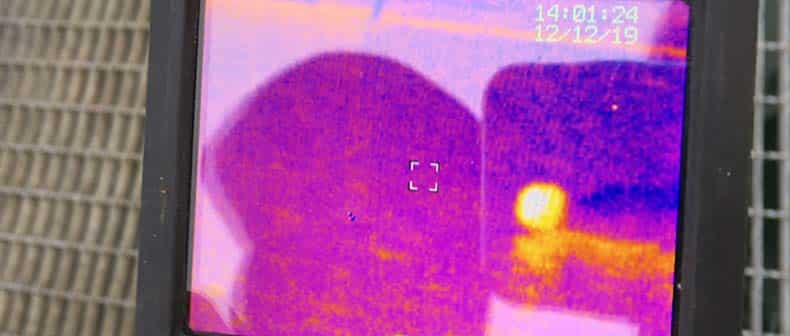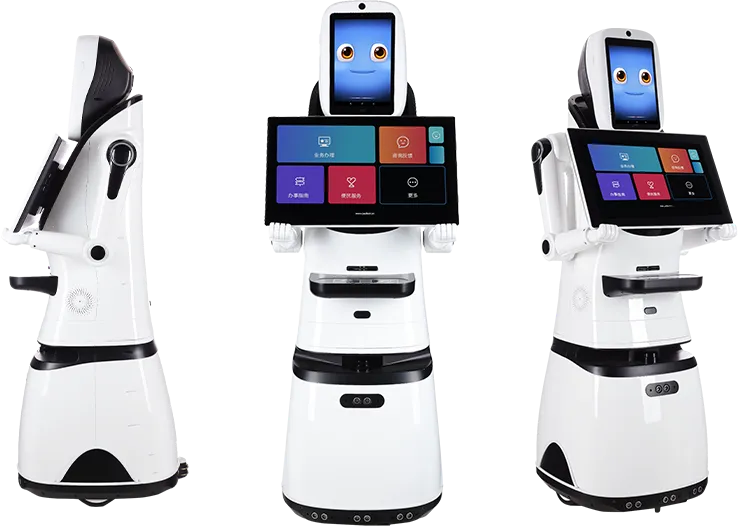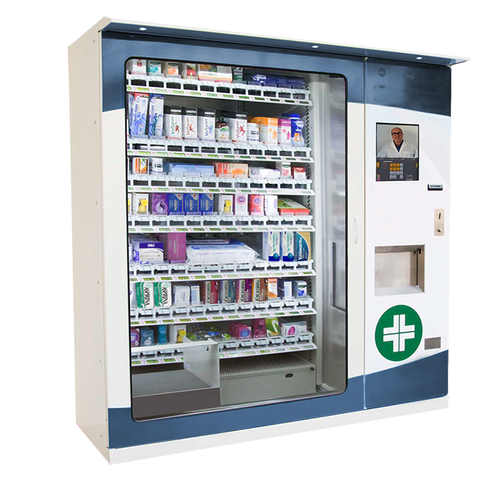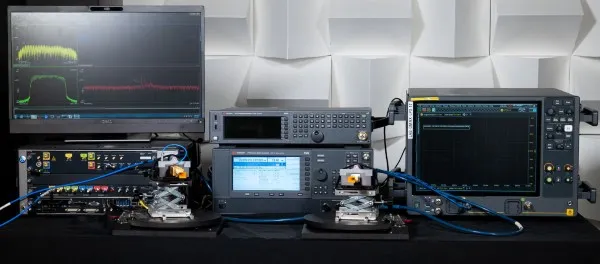1. Overview of Infrared Thermal Imaging Principles
Infrared thermal imaging systems focus an object's infrared radiation onto an uncooled infrared focal plane array detector (infrared detector). The detector converts varying infrared radiation levels into corresponding electrical signals. After signal amplification, filtering, and video processing, these signals form an observable video image.
Different objects, and different parts of the same object, emit and reflect infrared radiation with varying strengths. Thermal imaging leverages the radiation differences between the object and the background, and between different parts of the object itself, to present variations in emitted radiation. The resulting image represents the surface temperature distribution of the target rather than a visible-light scene, effectively turning temperature differences that are invisible to the human eye into a visible thermal image.
During imaging, a unit area of the target corresponds to a single pixel in the image. The pixel color value corresponds to the thermal camera's output video signal voltage.
Imaging resolution is a key parameter for evaluating infrared detectors. It indicates how many sensing elements are present on the infrared focal plane array. Common pixel formats currently in use include: 160x120, 320x240, and 384x288.
2. Characteristics of Infrared Thermal Imaging
Any object with a temperature above absolute zero emits infrared radiation. The surface temperature of the object determines the amount of emitted radiation, and there is a close relationship between emitted radiation and the imaging color values produced by the thermal system.
In a thermal image, detected infrared radiation intensity is converted to a voltage signal. Different voltages are represented by corresponding color values to visually indicate areas of different temperatures.
Environmental humidity affects thermal imaging. Water vapor in the air absorbs and scatters some infrared radiation, reducing the radiation intensity that reaches the sensor from the target. As a result, the displayed color values for the object may be lower than the values corresponding to its actual temperature. Emissivity also varies by material: higher emissivity yields stronger infrared radiation at the same temperature. Rough black surfaces typically have higher emissivity than smooth white surfaces. Changes in surface condition or viewing angle alter emissivity, which in turn affects the relationship between apparent temperature and image color values.
3. Anti-Drowning System Application Scenarios
Anti-drowning systems address three primary scenarios, each requiring different methods to assess personnel safety. Different types of systems are used for each scenario.
3.1 Prohibited-Swimming Water Areas
These water bodies are complex and potentially dangerous, often without on-site management. To protect public safety, swimming is prohibited. Systems for these scenarios typically use a visible-light camera combined with a thermal imaging camera. A perimeter or no-entry zone is defined; when the system detects a person entering the alarm area, it triggers local and remote alarms. The objective is to detect presence within a hazardous zone rather than to determine whether a person is swimming normally or is drowning.
Thermal cameras provide 24-hour monitoring in unlit conditions. However, due to lower thermal resolution, nighttime-only thermal detection can misidentify animals as humans, causing false alarms.
Vendors such as Hikvision and Dahua Technology provide integrated visible and thermal solutions for monitoring prohibited-swimming natural water bodies.
3.2 Natural Water Areas Permitting Swimming
These areas include beaches and rivers or lakes with good water quality and safety facilities, and usually with on-site staff. Systems for permitted-swimming natural water bodies must identify each swimmer's state in real time: normal swimming or a dangerous situation. This requires continuous, real-time monitoring of every swimmer.
Possible approaches include wearable smart devices and AI-vision systems.
3.3 Professional Indoor and Outdoor Swimming Pools and Venues
This scenario covers purpose-built indoor and outdoor pools with standardized architecture, high water clarity, and regulated lighting, allowing clear visual observation of swimmers. Systems here must also detect each swimmer's state in real time and continuously.
In such venues, wearable devices or AI-vision systems are used. AI-vision systems do not require swimmers to wear devices and are commonly applied in professional pool settings.
4. Effectiveness Analysis of Thermal Imaging in Anti-Drowning Applications
This section analyzes the effectiveness of infrared thermal imaging from the perspectives of scenario characteristics, decision logic, image content analysis, and equipment performance impact.
4.1 Scenario-Dependent Detection Content and Decision Logic
For prohibited-swimming areas, the system only needs to determine whether a person has entered the alarm zone. Thermal imaging is suitable for this application. Image analysis is based on identifying presence inside or outside the defined perimeter and issuing real-time warnings for individuals entering prohibited areas. In dark, unlit waters, thermal cameras enable around-the-clock monitoring and are well suited for large-scale perimeter protection of ponds, rivers, lakes, reservoirs, embankments, and shorelines. However, low-resolution thermal imaging at night may misclassify animals as humans, increasing false alarms.
For permitted-swimming scenarios (natural water areas and professional pools), the system must determine whether swimmers are safe while swimming. Core decision logic requires continuous identification of whether a person is in the water, whether normal swimming motions are present, and whether the swimmer is moving. In water, heat transfer between the human body and water quickly equalizes surface temperature, making it difficult for thermal imaging to capture reliable human signals. If thermal imaging loses the human target once the person is immersed and triggers an alarm whenever the target disappears, false alarms would overwhelm the system and render it ineffective. Anti-drowning systems intended for swimming scenarios must continuously track and identify swimmers and evaluate their swimming state. Thermal imaging cannot provide continuous tracking or behavioral information for immersed swimmers, and therefore offers no practical assistance in these scenarios.
4.2 Temperature Difference Failure
When a torso or part of the body is immersed, the surface temperature rapidly approaches water temperature, reducing detectable thermal contrast. Experimental data indicate that thermal contrast can drop to about one third of its original value. If a drowning victim's head is the only part above the water, the temperature difference with the water surface shrinks further, increasing the chance of missed detections. This characteristic renders thermal imaging unsuitable for swimming-scene anti-drowning systems.
4.3 Insufficient Spatial Resolution
Existing thermal cameras commonly use low-resolution sensors such as 320x240 pixels. In a 50 m standard pool, a single pixel can correspond to an actual area of about 16.3 cm2, so an entire human body may be represented by only a few pixels. This prevents precise identification of body parts, face orientation, or limb movements. For example, a drowning state in which the head and face remain submerged could be misclassified as normal surface behavior. This limitation indicates that thermal imaging is unsuitable for anti-drowning systems in swimming scenarios.
4.4 Severe Environmental Interference
Pool environments typically have high humidity (often over 85%), and water vapor can absorb up to 62% of infrared radiation in the 8-14 micrometers band, causing signal attenuation. Tests show that under such conditions, human detection accuracy with thermal imaging can decrease by about 71%. In addition, water surface ripples, specular reflections, or floating items such as flotation rings or clothing can interfere with thermal algorithms and increase false alarm rates. These environmental factors further limit the applicability of thermal imaging in swimming scenarios.
5. Conclusion
Anti-drowning deployments fall into two main categories: systems for prohibited-swimming water bodies and systems for swimming-enabled scenarios (natural swimming areas, indoor and outdoor pools, and swimming venues).
Infrared thermal imaging, when combined with visible-light video surveillance, can form an around-the-clock perimeter warning system for outdoor prohibited-swimming zones and plays a useful role in managing safety at water boundaries.
However, technical validation and field inspections indicate that infrared thermal imaging is not suitable for anti-drowning systems in swimming scenarios. Its characteristics prevent effective detection of immersed human bodies and preclude continuous tracking and behavioral assessment of swimmers, so thermal imaging cannot provide meaningful assistance in these use cases.
 ALLPCB
ALLPCB








